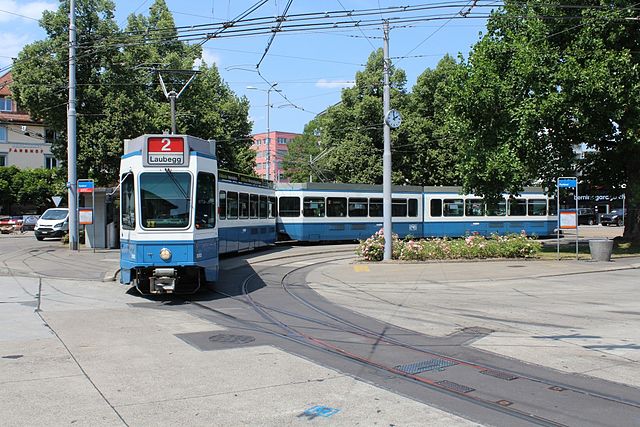
Tram
Street-running light railcar / From Wikipedia, the free encyclopedia
Dear Wikiwand AI, let's keep it short by simply answering these key questions:
Can you list the top facts and stats about Streetcar?
Summarize this article for a 10 year old
A tram (called a streetcar or trolley in the United States and Canada) is a type of urban rail transit consisting of a rail vehicle, either individual railcars or self-propelled trains coupled by a multiple unit, that runs on tramway tracks on urban public streets; some include segments on segregated right-of-way.[1][2][3] The tramlines or networks operated as public transport are called tramways or simply trams/streetcars. Many recently built tramways use the contemporary term light rail.


Tram vehicles are usually lighter and shorter than main line and rapid transit trains. Today, most trams use electrical power, usually fed by a pantograph sliding on an overhead line; older systems may use a trolley pole or a bow collector. In some cases, a contact shoe on a third rail is used. If necessary, they may have dual power systems—electricity in city streets and diesel in more rural environments. Occasionally, trams also carry freight. Trams are now commonly included in the wider term "light rail",[4] which also includes grade-separated systems. Some trams, known as tram-trains, may have segments that run on mainline railway tracks, similar to interurban systems. The differences between these modes of rail transport are often indistinct and a given system may combine multiple features.

One of the advantages over earlier forms of transit was the low rolling resistance of metal wheels on steel rails, allowing the trams to haul a greater load for a given effort. Another factor which contributed to the rise of trams was the high total cost of ownership of horses. Electric trams largely replaced animal power in the late 19th and early 20th centuries. Improvements in other vehicles such as buses led to decline of trams in the mid 20th century. However, trams have seen resurgence in recent years.